Aussies reveal what is in their shopping trolleys during the cost of living crisis
The cost of living crisis is getting critical and grocery shopping has never been harder. These receipts reveal some of the sacrifices Aussies are making.

Eat
Don't miss out on the headlines from Eat. Followed categories will be added to My News.
What do you spend at the grocery store during a cost of living crisis? It is a big question that gets different answers from everyone.
But the universal response is far more than you used to.
Everyday Australians are struggling — having to make difficult decisions every time they enter the supermarket.
But some Aussies say they still splurge despite the crisis.
Julia, 35, works as a primary school teacher and has three kids and a husband to feed and she finds it is costing her around $400 a week.
Julia’s very aware that her grocery bill is high but finds it is impossible to reduce. She’s even stopped buying any red meat.
Instead she uses mince and chicken and invests in veggie options.
She’s also swapped out brand name items for home brand items like nappies, laundry powder and soap.
Currently Julia is thrilled because she’s started buying her fruit and vegetable box from a local orchard and it is helping her save some much needed cash.
“My box of fruit from Woolies was costing $96, so I’m going to stop doing that and start getting my fresh stuff from a local cheaper source,” she said.
Donna, 64, is a casual teacher and single woman who spends around $130 on groceries every week.
She is only feeding herself so she makes a big stir-fry and lives off it for a few days. She tries to make smart choices with her shopping.
“The cherry tomatoes were $6.50 for instance but the grape ones were $3.50, so I got the grape,” she said.
While she doesn’t deprive herself, she also considers if splashing out on something is worth it.
“This week I got some spaghetti and pine nuts for a pasta dish. The pine nuts are expensive but they will last a few meals, so once I portion it out — it isn’t a huge cost,” she explained.
Donna has a few things she refuses to skimp on though — parmesan cheese, hummus and gravox.
She typically invests in fresh fruit and vegetables and makes easy and cheap dishes like pasta to stop her grocery bill from getting out of hand.
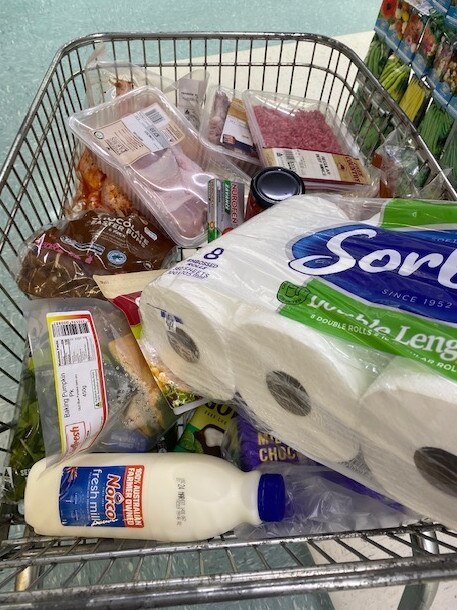
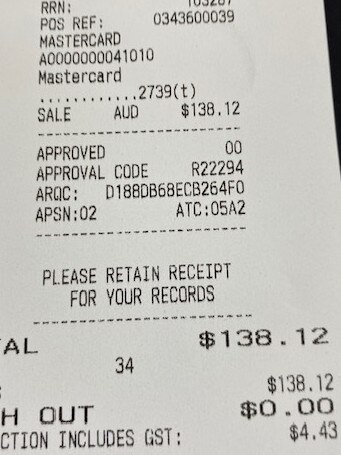
Liam, 25, works in the environmental field and lives with his partner in Brisbane.
Liam spends around $110 a week on groceries but admits he could save more by shopping at cheaper supermarkets — but he just shops at whatever grocery store is closer.
As a health-conscious young professional, he tends to invest in vegetables so he can make easy stir frys and kangaroo meat for lunch and dinners.
He finds that kangaroo meat usually goes for around $11 and always buys tofu because it doesn’t go off and can be used to replace meat.
Liam is aware he could get his grocery bill down if he didn’t splurge on snacks like popcorn, protein bars and yoghurt — he easily spends $30 on those treats a week but he keeps his bill down by not spending much on meat.
However, he does reward himself for being a savvy shopper by spending around $70 a week on takeaway usually on the weekends when he just wants to relax and can’t be bothered with meal prep.
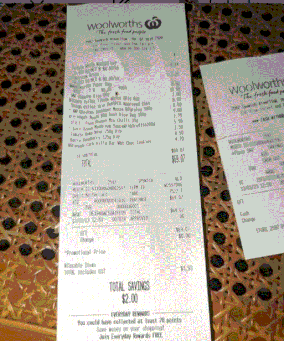
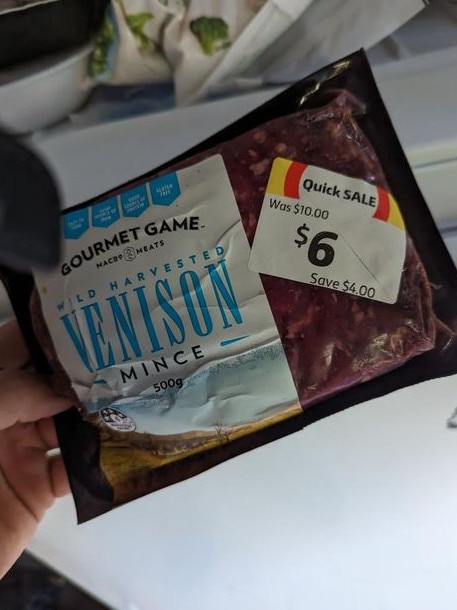
Amanda, 29, is an accountant who spends $120 a week on her groceries, including feeding her two pooches.
Amanda’s typical weekly shop includes pasta, taco ingredients, milk, eggs and plenty of dog food with a cheeky block of chocolate thrown in.
“I buy stuff that I can make for lunches, and then I do what I want on the weekend,” she explained.
She likes to buy the basics to get her through the week and which she can quickly turn into leftovers for lunches and then splurges on the weekends by dining out with mates.


Doreen, 94, is a pensioner spends around $90 a week.
Doreen prides herself on being an eagle-eyed shopper who always pays attention to every bargain.
She routinely stocks up on products when they are on sale, but her weekly shop includes breads, sausages, eggs, milk, and pasta.
The pensioner is devoted to having her daily breakfast, including eggs, toast and occasional sausage.
However, she admits her best savings tip involves some added help: “My daughter often cooks dinner for me, so I don’t have to spend much on organising my dinners.”
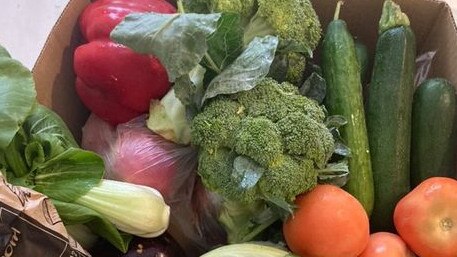
Holly, 31, works as a designer and finds she and her partner spend about $200 a week.
She explained that they keep their bill down by relying heavily on frozen food like dumplings and ice cream.
She’s also a big fan of pasta because it lasts for a few meals and is incredibly cheap and she’s factored out things like deli meat.
Holly has also started investing in frozen food over the fresh options to stop her grocery bill from soaring as the cost of living balloons.
“I don’t buy too much fresh veg because it doesn’t last very long and I’m eating more frozen food this year than last year by far,” she explained.


Georgia, 29, who works in HR, finds she and her partner are spending easily $150 a week, and they aren’t buying anything exciting.
She’s even stopped buying red meat and stocks up on chicken and fish to keep her grocery bill down.
She’s also switched from shopping at Coles and Woolworths and tries to exclusively buy from Aldi.
“We’re buying the normal stuff, toilet paper, cleaning products, snacks. We generally meal plan for three lunches, three dinners and two breakfast options,” she explained.
However, Georgia has noticed a big jump in the cost of fun snacks - so she’s less likely to treat herself to simple things like museli bars now.
Daisy, a drag queen and teacher, spends $300 a week keeping him and his partner fed. Daisy puts their bill down to their love of fresh fruits.
Currently, to cut down on costs, he and his partner are sticking to eating lots of chicken breast and staying away from anything too lavish.
“We used to buy our own dinners and try different sauces and marinates/meats, but they got too crazy to manage and were expensive,” he explained.
Daisy explained that they used to mix up their meals all the time but their grocery bill got too out of hand.
We just eat the same breakfast and lunch everyday now,” he said.


Sini, a mother of two boys, spends $400 keeping the fridge stocked weekly. She doesn’t think she buys anything too lavish besides her taste in milk.
“I like to buy Gippsland Jersey as it supports actual local farmers, and my boys drink a lot at the moment. Maybe 12l a week but will continue to buy it as long as I can afford it,” she explained.
She also heads to the local butchers for her meats, pushing the price up a bit, but she finds the quality is better.
As for her supermarket shop, she fills her cart with yoghurt, cheese, school snacks, fruit, and mostly frozen vegetables as it lasts us better, nuts, rice, cereals, bread, and toiletries. Occasionally she buys ice cream or treats for kids and soft drinks.
Ainsley, 31 is a postgrad student and her partner works full time as a tradie. To cope with the cost of living they’ve cut meat out of their weekly shop.
“We generally eat vegetarian through the week so not buying much meat has kept the cost down,” she explained.
The student admits that depriving herself of meat during the week means they can still afford to order food religiously on Friday and Saturday.
Despite the differences in everyone’s shopping trolleys, it seems pretty clear Australians are paying big bucks to feed themselves during a cost of living crisis.
Originally published as Aussies reveal what is in their shopping trolleys during the cost of living crisis





